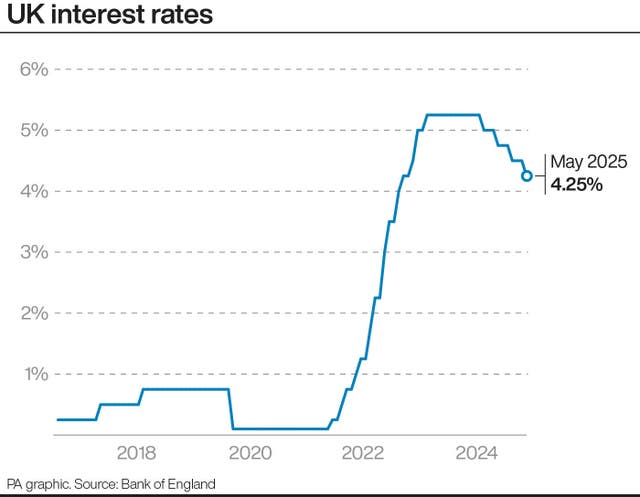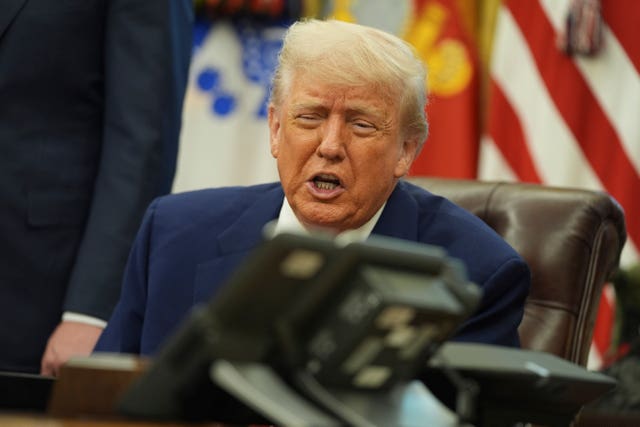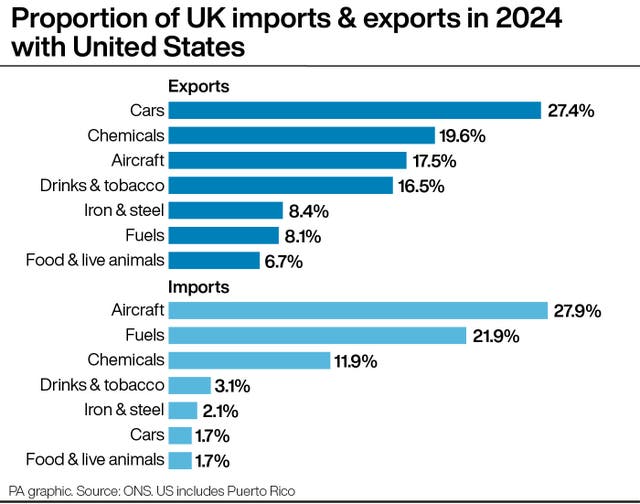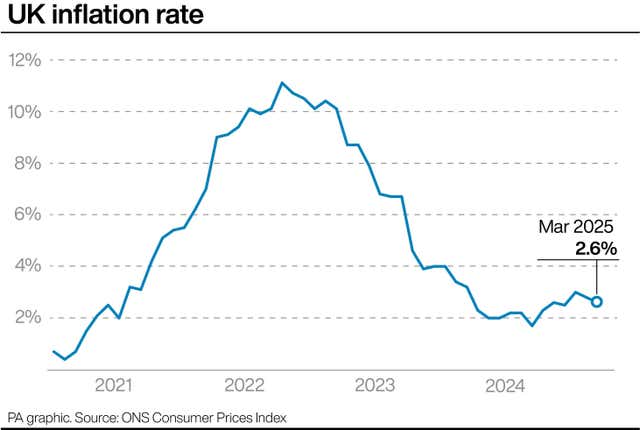Bank of England cuts rates as governor welcomes UK-US trade deal
Interest rates were cut from 4.5% to their lowest level since May 2023, in their fourth reduction over the past year.

The Bank of England has cut interest rates to 4.25% after a slowdown in inflation, as the central Bank’s chief welcomed a UK-US trade deal.
Interest rates were cut from 4.5% to their lowest level since May 2023, in their fourth reduction over the past year.
The Bank said it reduced the rate – which helps to dictate mortgage rates – after a recent easing of inflation, while it also reduced its inflation forecast for the rest of 2025.

But it also downgraded its economic growth prediction for next year, warning that an escalating global trade war will drag on growth over the next three years.
The forecasts came hours before an announcement from US President Donald Trump regarding a trade deal between the UK and US.
The trade agreement was confirmed in a call between the Prime Minister and the US president which was broadcast live on both sides of the Atlantic.
US import taxes which had threatened to cripple British high-end carmakers were cut from 27.5% to 10%, while the 25% tariff on steel has also been removed entirely.
Andrew Bailey, Governor of the Bank of England, earlier welcomed the agreement.
“We have news to suggest that there will be an agreement and we welcome this news. It will help to reduce uncertainty,” he said.
“The UK is, though, a very open economy and is affected by the tariffs affecting other economies.
“I say that because I hope the UK agreement, if it is the case this afternoon, is the first of many.
“It is excellent that the UK is leading the way and I do congratulate all those involved.”

But he stressed that the UK is an “open economy” and would therefore face a potential impact from changes to global trade, irrespective of a UK-US trade deal.
Forecasts released from the Bank earlier on Thursday had indicated that original US tariff plans and their impact on global trade would dent UK growth by 0.3 percentage points over the next three years.
Most of this impact is set to come from “lower US demand for UK exports” and weaker global activity, according to the Bank’s latest report.
It added that increased “uncertainty” over the trade policy is also likely to contribute to the downward impact on UK growth.
The forecasts were based on tariff policy from the end of April, factoring in a 10% US tariff rate on most UK exports to the country, as well as a 25% tariff on cars and steel.

As a result, the Bank cut its UK growth forecast to 1.25% for 2026, from 1.5% in its February projections.
But it also predicted the UK economy will grow by 1% this year, upgrading its previous 0.75% forecast on the back of a strong start to 2025.
Meanwhile, UK inflation is predicted to witness a shallower rise than previously expected.
Consumer Prices Index (CPI) inflation is on track to peak at 3.5% in the third quarter of this year, on the back of rising energy prices.
But this is a reduction on its previous guidance that inflation would peak at 3.7%.
Inflation is also due to come back down to the 2% target rate set by the Government and Bank of England by the first quarter of 2027, ahead of its previous forecast.
Nevertheless, Bank officials signalled higher trade tariffs are likely to push UK inflation down by “0.2 percentage points in two years’ time”.
Weaker global trade activity and reduced US demand for exports are expected to contribute to the drop in inflation, according to the report.
But it also highlighted that multinational firms could change their pricing in the UK to help deal with the impact of “higher costs in other jurisdictions”.
The Bank has also predicted it will cut interest rates at a faster rate than previously expected, amid the backdrop of potentially shallower inflation and slower growth next year.

It has said interest rates are predicted to fall as low as 3.5% by the second quarter of next year, indicating a further three cuts by rate-setters.
Meanwhile, UK unemployment is also predicted to rise over the next two years, as businesses face uncertainty over trade tensions and the recent increase in wages and national insurance contributions.
The unemployment rate is set to peak at 5% next year and stay at this level in 2027, according to the new forecasts.
The Bank previously predicted it would rise to a high of 4.8%.





